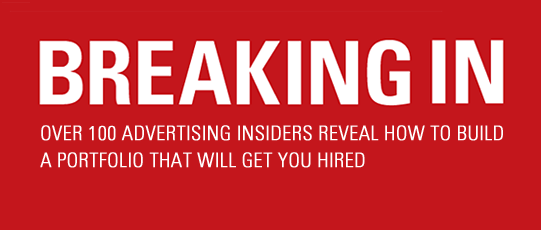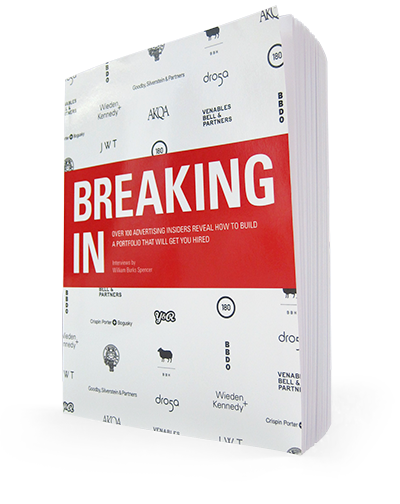Check out some great work from Hal Curtis.
WS: What do you look for in a student book? And what impresses you?
HC: The first thing you always look for are good ideas. Good thinking. I’m an art director so I’m probably more severe in my criticism if I’m looking at an art director’s work. I’m harder to please. But it’s always about the idea. You look for craftsmanship and alongside craftsmanship you look for passion. I want to see a unique voice. Someone who’s an individual. The best advertising talks to you like a person—not a company. So good writers, they have a unique voice. A distinct voice. And you can see that in a book. In a good art director’s book you see a unique style. They just have a certain something that makes them stand out and makes them interesting. Good books can be very traditional, or they can be very unusual, or they can be very organic. You can see, when you look at a book, someone who’s really excited about the craft. You can also see when someone doesn’t really know what they want to do yet.
But, to sum it up: You look for strong ideas, good craftsmanship, passion, individual voice, and style.
WS: So, do you think it’s really important to have finished work? Or do you think sketches are okay?
HC: I’ve seen it happen both ways. I think, for an art director, you need to show somebody who’s going to give you a job that you have an understanding of the fundamentals of art direction. That you understand composition. That you understand typography. That you know how to lay out a page. That you know how to compose a television frame. That you have an understanding of those things. So many art directors don’t. Particularly ones who’ve gone to just ad schools and haven’t studied art. The fundamentals. They don’t have a passion for or knowledge of typography. They don’t know how to draw. They don’t understand color, or chroma, or value, and the basic tools of art direction you use every day. And if you don’t understand them, you’re at a real disadvantage. So I think for art directors, you should go to art school. You should either have an undergraduate fine-art degree or at least have attended art school and studied before you go to an ad school and put together a portfolio. Draw, paint, make a film, take some pictures, learn the art part. Then put together a book. So for art directors, you must demonstrate craftsmanship.
For writers, I don’t think showing finished work is as important. I do think you can get a job with just tremendous headlines scribbled on napkins. Or a journal of just thoughts and scripts. You know, Jeff Kling got a job here as a writer with just a sketchbook. It had style and a unique voice. It was full of drawings. But it was mostly just writing. And it was this really intriguing book of ideas. There wasn’t an ad in it.
[ … ]
WS: And do you think it’s important for art directors to show that they can lay out copy?
HC: I do. Now, some people will tell you it’s probably not as important as it used to be because we don’t do that kind of advertising as often anymore. But I think, as you get online and art directors become more, and more, and more a part of what’s created in the digital space, it will become important again. But yeah, I think that when you’re trying to get a job it’s like going through the NFL combine. They put them through every skill test imaginable. Speed, strength, skill, you name it. They want to see how they do in each of these different areas. Same with a book, the more talent you can demonstrate, the better. The more areas of craftsmanship and execution you can show that you’re fluent in, the better. So if, as an art director I come in with long copy that shows I can handle typography, and I can show you, through another campaign, that I can do traditional work, but over here I show you that I can be organic, and handmade, and cool, and appeal to a different target, and over here I understand the digital space. The more skills you can demonstrate in your portfolio, the better.
[ … ]


Comments are closed.